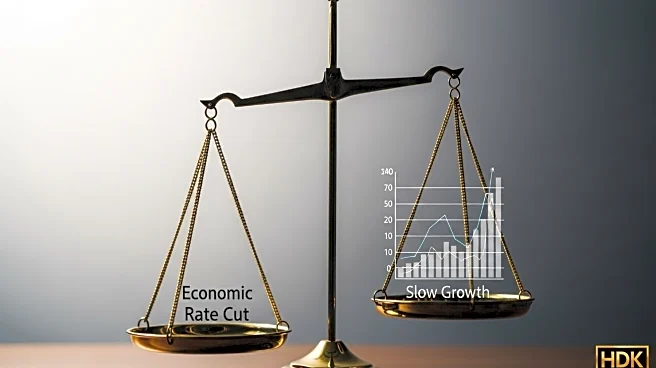What's Happening?
The Federal Reserve is contemplating substantial rate cuts after a disappointing U.S. jobs report for August, which showed the addition of only 22,000 jobs, far below the forecasted 75,000. The Bureau of Labor Statistics also revised June's figures to a net loss of 13,000 jobs. These developments have increased the likelihood of a quarter-point rate cut, with a possibility of a half-point reduction. The CME Group's FedWatch tool indicates a 12% chance of a 50 basis point cut in September. The weak jobs data has led to lower Treasury yields and a surge in gold prices.
Why It's Important?
The potential rate cuts by the Federal Reserve are significant as they could impact borrowing costs, consumer spending, and investment decisions. Lower rates typically stimulate economic activity by making loans cheaper, which can help counteract the effects of a slowing labor market. However, they also reflect concerns about the economy's health, particularly in terms of job creation. The decision to cut rates could influence market dynamics, affecting stock prices, bond yields, and commodity markets, including gold.
What's Next?
The Federal Reserve's decision on rate cuts will be closely watched by investors and policymakers. The upcoming September meeting will be crucial in determining the extent of the rate reduction. Market participants will also pay attention to other economic indicators, such as inflation and consumer spending, to gauge the Fed's future actions. The central bank's approach to managing economic challenges will have implications for financial markets and the broader economy.












